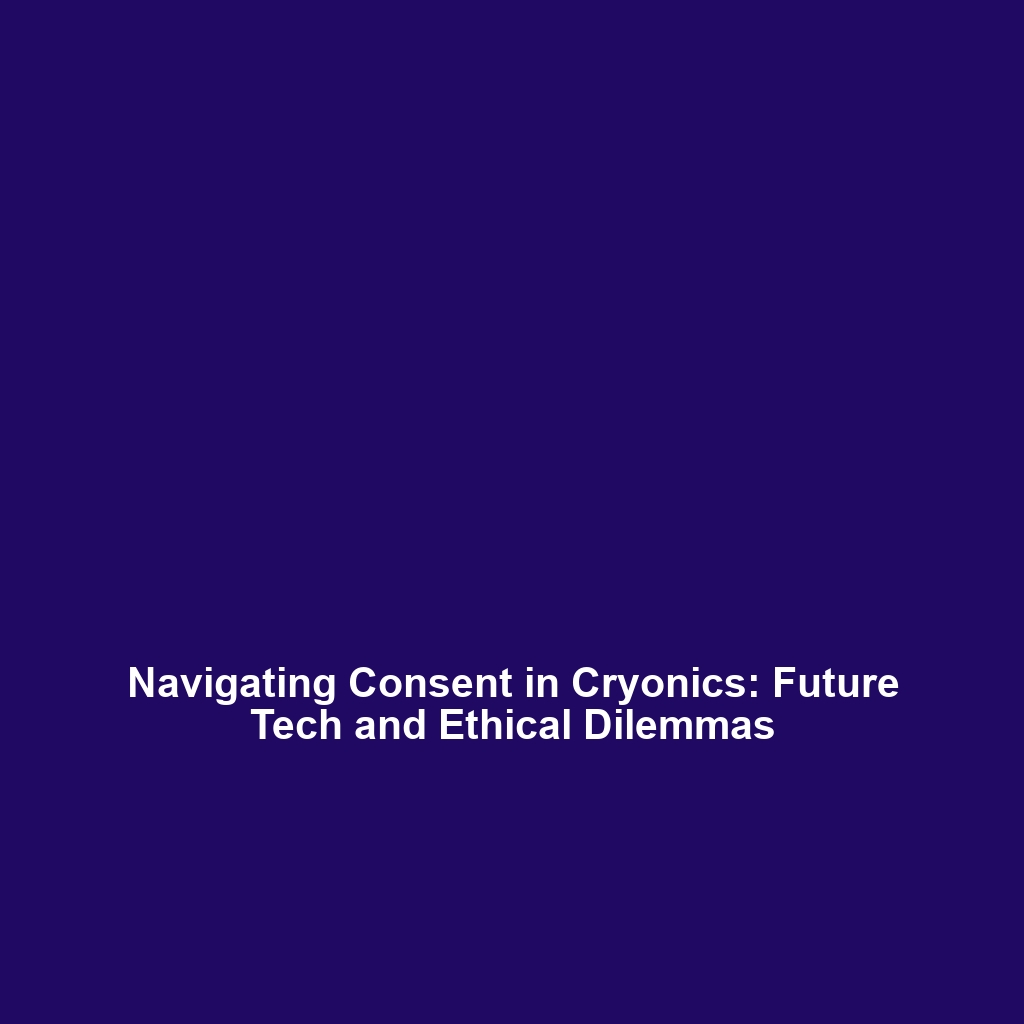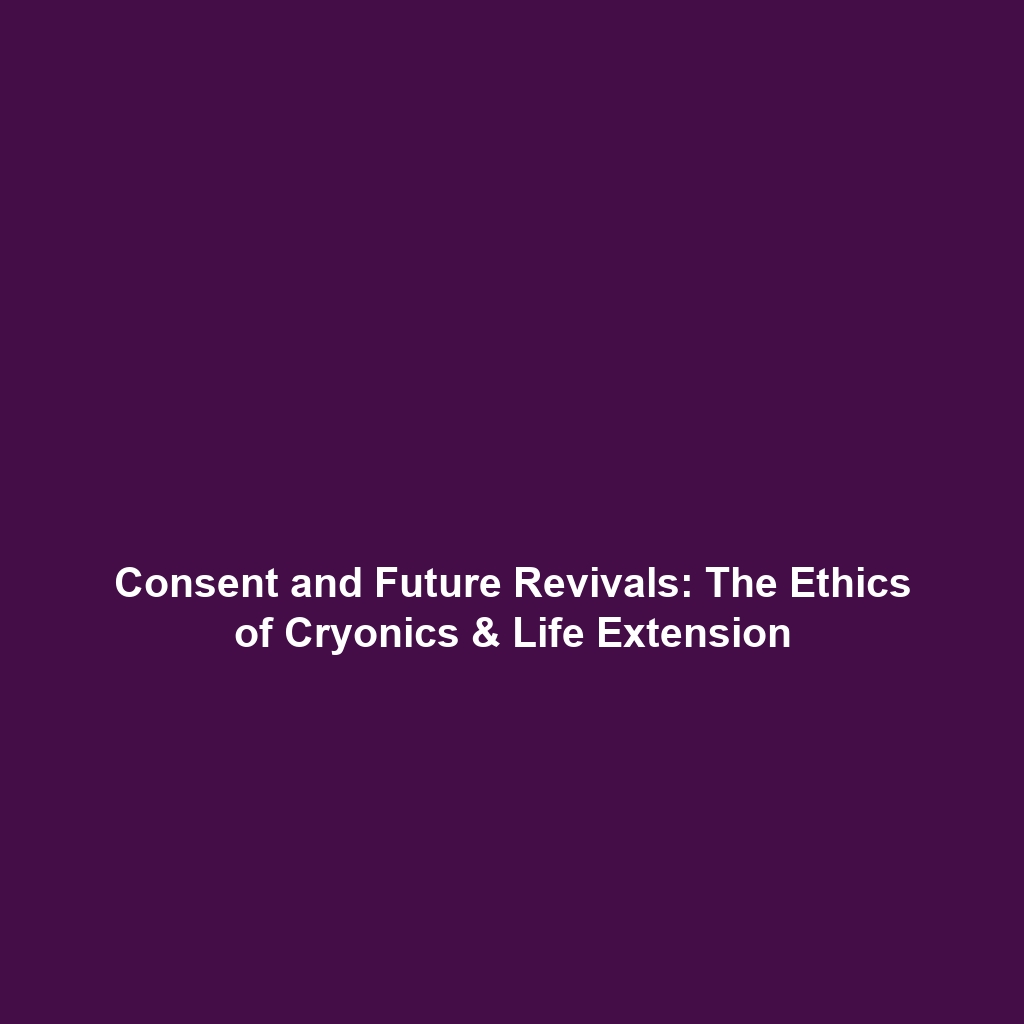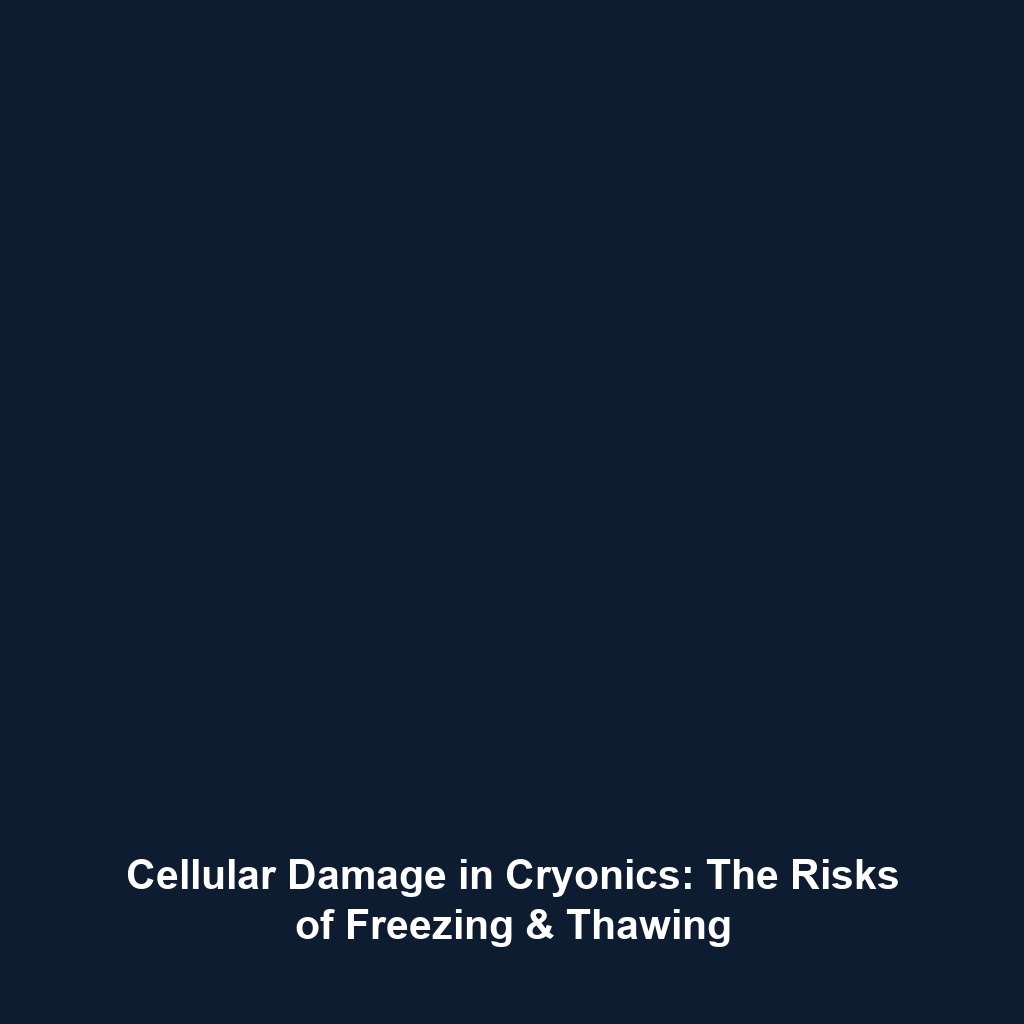CRISPR and Gene Editing: A New Frontier in Aging and Life Extension
Introduction
In the realm of Cryonics & Life Extension, CRISPR technology stands out as a significant breakthrough, offering hope for the repair or prevention of damage caused by aging-related genes. This innovative gene-editing approach allows scientists to target and modify specific DNA sequences, including those that lead to telomere shortening and DNA damage. Understanding how CRISPR technologies can mitigate the aging process is crucial not only for extending human life but also for enhancing the quality of life as we age. This article delves deep into the applications, challenges, and future research surrounding CRISPR and gene editing in the context of life extension.
Key Concepts
Understanding CRISPR Technology
CRISPR, an acronym for Clustered Regularly Interspaced Short Palindromic Repeats, is a groundbreaking gene-editing tool that enables precise alterations to the DNA of living organisms. Its mechanism involves the use of a guide RNA that directs the Cas9 enzyme to the specific location of the DNA that needs modification. By facilitating targeted gene disruption or correction, CRISPR holds the potential to address genetic conditions associated with aging, particularly those linked to telomeres—structures that protect the ends of chromosomes but shorten with each cell division.
Linking Gene Editing to Life Extension
The aging process is characterized by genetic damage, ultimately leading to various age-related diseases. By utilizing CRISPR, researchers aim to combat these issues at the molecular level, allowing for improved cellular function and longevity. This intersection of gene editing and life extension opens up new avenues for therapeutic interventions that could significantly slow down aging or even reverse certain effects.
Applications and Real-World Uses
The applications of CRISPR and gene editing in Cryonics & Life Extension are profound. Some notable examples include:
- Cellular Regeneration: CRISPR can be employed to enhance the regeneration capabilities of stem cells, providing solutions for age-related degenerative diseases.
- Treatment of Genetic Disorders: By correcting mutations associated with genetic diseases, CRISPR could help reduce health declines common in the elderly.
- Telomere Extension Techniques: Research is ongoing into using CRISPR to lengthen telomeres, potentially mitigating cellular aging.
Understanding how CRISPR and gene editing are used in Cryonics and Life Extension is essential for exploring potential therapies and treatments for age-related diseases.
Current Challenges
Despite its promise, the study and application of CRISPR in life extension face several challenges, including:
- Ethical Concerns: The potential for unintended consequences in gene editing raises ethical questions about genetic modifications.
- Off-Target Effects: CRISPR technology can sometimes cause unintentional modifications to the genome, potentially leading to harmful effects.
- Regulatory Hurdles: Navigating the complex regulatory landscape for gene editing can delay the development of new therapies.
These challenges highlight the issues in Cryonics & Life Extension related to implementing CRISPR technology effectively and ethically.
Future Research and Innovations
As CRISPR technology continues to evolve, several exciting research areas are emerging that may shape the future of life extension:
- Next-Generation CRISPR: Innovations that enhance the precision and efficacy of gene editing are on the horizon, making it safer for human applications.
- Combining CRISPR with Other Technologies: Integrating CRISPR with advanced therapies such as stem cell treatment or gene delivery systems may yield new life extension strategies.
- Longitudinal Studies: Research to monitor the long-term effects of gene editing on human health is crucial for ensuring safety and effectiveness.
Breakthroughs in these areas could significantly influence the trajectory of Cryonics & Life Extension research and applications.
Conclusion
CRISPR and gene editing represent groundbreaking advancements in the quest for prolonging human life and enhancing its quality. The potential to repair or prevent damage caused by aging-related genes, including telomere shortening and DNA damage, underscores its importance in Cryonics & Life Extension. As research progresses, addressing the ethical and technical challenges of these technologies will be crucial for realizing their full potential.
For those interested in exploring this topic further, consider reading about cryonics and other life extension strategies.






